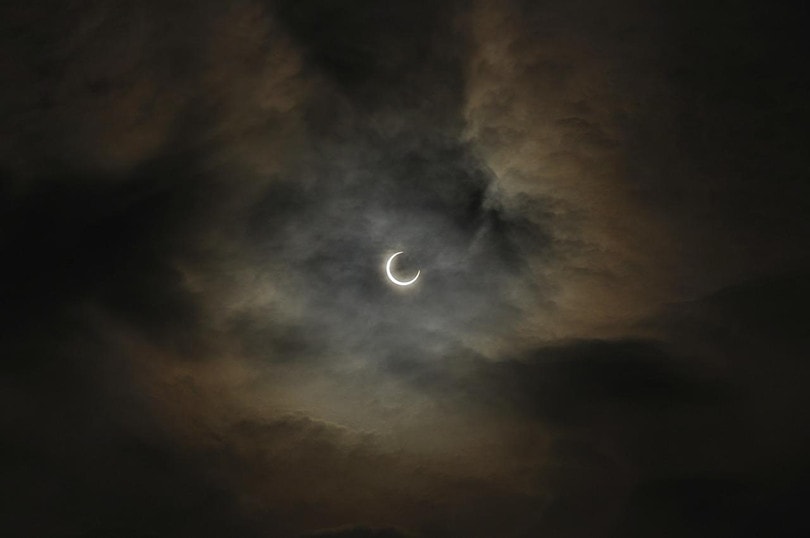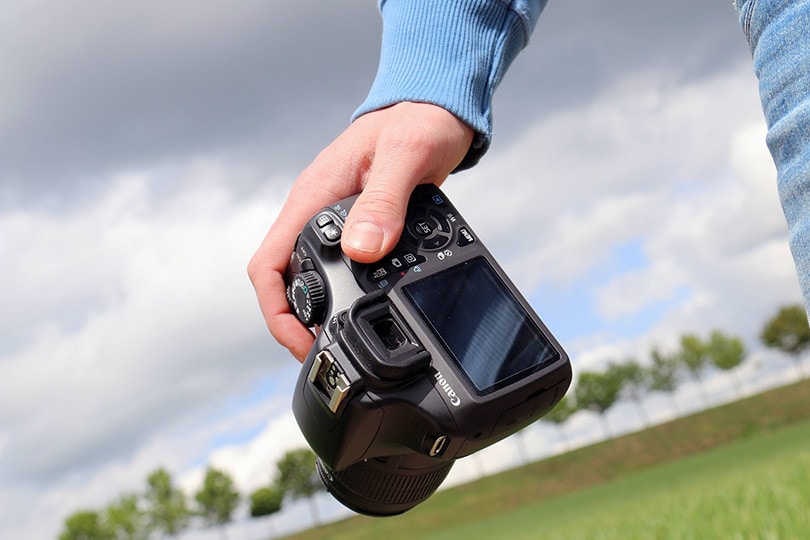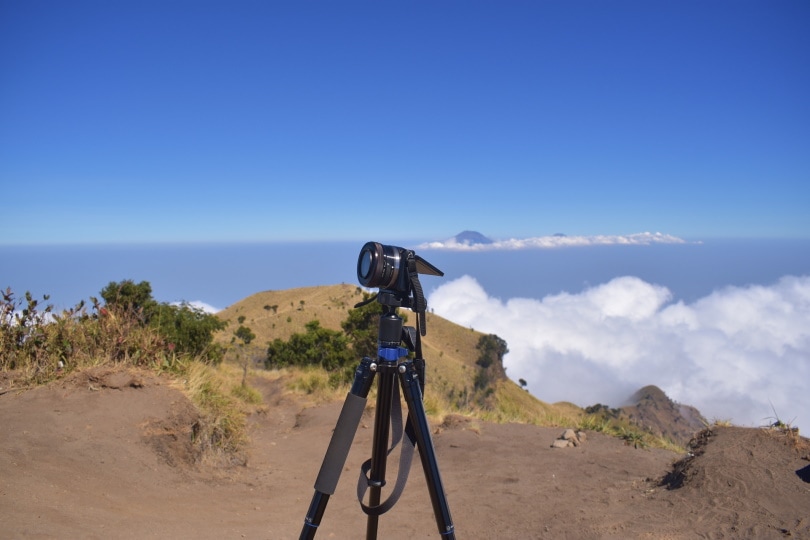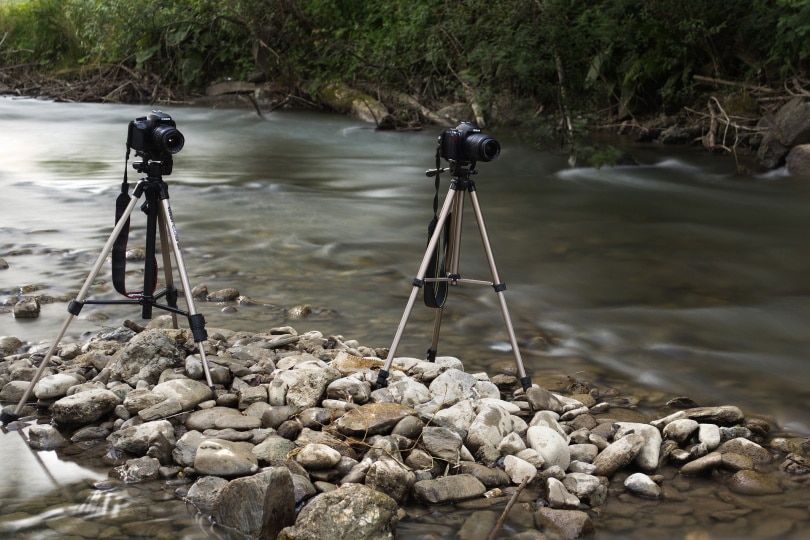How to Photograph a Solar Eclipse – 12 Tips & Tricks
Last Updated on

If you want to know how to take a picture of a solar eclipse, there are a few tips to follow to have the best experience possible.
Here, we highlighted 12 different ways to get the most out of your pictures when you’re capturing a solar eclipse.
While you don’t need to follow all these tricks, doing so will help make your eclipse viewing and photographing experience more enjoyable and more effective!

How to Photograph a Solar Eclipse – 12 Tips and Tricks
1. Plan, Plan, Plan

Getting top-notch photos of the sun requires getting all the right equipment, finding the right location, and having tons of practice.
In short, you need to plan everything out to get the pictures that you want. There’s no such thing as too much planning when it comes to photographing an eclipse.
2. Enjoy the Eclipse
Solar eclipses don’t happen every day, and it might be years before you get another opportunity to view one.
So, take a moment and enjoy the eclipse (safely). Look at it without a viewfinder or LCD screen. Simply enjoy the eclipse. The good news is that if you follow these tips here, you’ll have plenty of time to enjoy the eclipse and get all the photos that you can handle!
3. Practice Before the Eclipse

A little bit of practice goes a long way and ensures that you won’t spend the entire eclipse fiddling with your equipment.
Practicing with a full sun can give you an outstanding baseline for the eclipse. Get familiar with everything so you can spend more time enjoying the eclipse and less time trying to figure out your camera.
4. Get a Great Solar Filter
If you’re looking to photograph an eclipse, you will need a solar filter. This is true even if you only plan on photographing a partial eclipse. You don’t want to waste your time setting everything up during totality.
Pointing your camera at the sun before totality will likely damage your camera, so don’t risk it. Get everything set up before that moment, and use a solar filter so you don’t hurt your eyes and damage your equipment.
5. Get the Settings Right

While you’re practicing, play with the settings. From ISO to aperture speed, mess with it all. While most modern cameras have auto-function features, they’re not set up for photographing the sun. If you want high-quality photos, try out the settings before the day of the eclipse.
6. Don’t Use Filters During Totality
You need solar filters for everything up to totality. But once totality hits, you’ll need to take the solar filters off to get the pictures that you want. Practice doing this before heading out, so when the time comes, you can do it as fast as possible and enjoy more of the eclipse.
7. Consider a Tripod

We highly recommend using a tripod to photograph a solar eclipse. Tripods do a great job of getting a stable image, and they enable you to get the sun in view beforehand. This makes it easier to enjoy the eclipse and get the photos that you want.
8. Remote Shutter Releases
One of the best things that you can do is to pair a tripod with a remote shutter release for your camera.
This lets you set everything up before you want to start taking pictures, and when the event happens, you can take pictures with the click of a button while enjoying the eclipse without a viewfinder.
9. Turn Off Flash

The sun is bright enough for your photography that you don’t need flash. Even during totality, you won’t need flash to get the pictures that you want.
Just as importantly, if you’re in a public setting, plenty of people will enjoy the darkness of totality and won’t want annoying flash photography ruining the experience. Turn off the flash beforehand and enjoy the eclipse!
10. Get a Full Battery
The last thing that you want is to have your battery die at a critical moment. There’s a good chance that you’ll spend plenty of time taking photos at different stages of the eclipse, so it’s a good idea to have a backup battery on hand too.
At the very least, ensure that you have a fully charged battery before you head out and know how long it should last on a single charge.
11. Double-Check Your Storage

Just like you don’t want the battery to die at a key moment, you don’t want to run out of storage space on your SD card. If you plan to take a ton of photos, consider having a backup SD card too.
12. Find the Perfect Place
Getting top-notch eclipse photos comes down to your location and the conditions. While you can’t control the conditions, you can control the location. Find a spot where you’ll have a clear view of the eclipse, and get there early to camp it out.
Finding the perfect location can be the difference between a great photo and one that leaves you wishing for more!
Conclusion
Viewing an eclipse is a phenomenal experience, something that many photographers want to document. But it’s not as easy as you might think, so it’s essential to get plenty of practice and experience before heading out.
Hopefully, after reading this guide, you’re confident enough to get everything that you need to photograph an eclipse and still enjoy the show!
- See also: How to Photograph a Lunar Eclipse
Featured Image Credit: opapaty, Pixabay
Table of Contents
About the Author Robert Sparks
Robert’s obsession with all things optical started early in life, when his optician father would bring home prototypes for Robert to play with. Nowadays, Robert is dedicated to helping others find the right optics for their needs. His hobbies include astronomy, astrophysics, and model building. Originally from Newark, NJ, he resides in Santa Fe, New Mexico, where the nighttime skies are filled with glittering stars.
Related Articles:
How to Collimate Binoculars: 9 Expert Tips
How to Clean a Rifle Scope: 8 Expert Tips
How to Choose Binoculars for Bird Watching: 10 Expert Tips
How to Clean a Refractor Telescope: Step-by-Step Guide
How to Clean a Telescope Eyepiece: Step-by-Step Guide
Monocular vs Telescope: Differences Explained (With Pictures)
What Is a Monocular Used For? 8 Common Functions
How to Clean a Telescope Mirror: 8 Expert Tips
